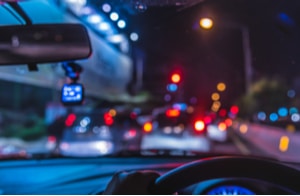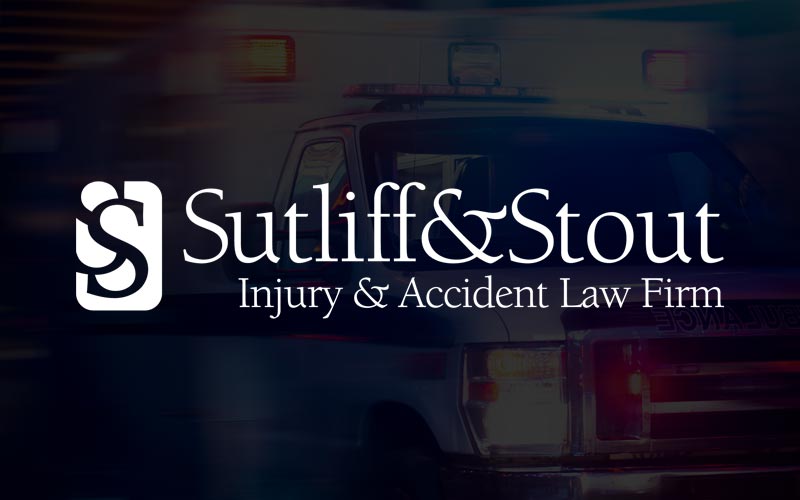 Night driving has long been known to be more dangerous than daytime driving. All drivers in Texas have a responsibility to exercise reasonable care, and that requires extra caution when driving at night. Anyone who fails to do so may be held liable for any injuries or damages caused in the event of an accident. Leaving aside the obvious danger of lesser visibility, what exactly makes driving at night so dangerous?
Night driving has long been known to be more dangerous than daytime driving. All drivers in Texas have a responsibility to exercise reasonable care, and that requires extra caution when driving at night. Anyone who fails to do so may be held liable for any injuries or damages caused in the event of an accident. Leaving aside the obvious danger of lesser visibility, what exactly makes driving at night so dangerous?
The Numbers on Nighttime Car Accidents
Statistics and research data have repeatedly shown that more crashes and fatalities occur during late-night hours than during the day. Consider the following:
- The Insurance Institute for Highway Safety found that in 2017, the most fatal time of day for teen drivers was between 6 p.m. and 9 p.m.
- The National Highway Traffic Safety Administration reviewed statistics on seatbelt use and nighttime driving. They found that in 2005, only 47% of victims not wearing a seatbelt died in a crash during the day, while 64% of passengers not wearing a seat belt died in a crash at night.
- National Safety Council warns that the risk of a deadly crash is three times greater at night than during day
We want to help you too.
Submit the short form below to get a free case review.
Six Dangers of Driving at Night
Low Visibility
Even drivers with 20/20 vision won’t be able to see as well when driving at night. Drivers with visual impairments have an even more difficult time due to the low visibility and glaring headlights. A few tips to keep in mind to improve your ability to see when driving at night include:
- Clean your windshield often to eliminate glare and streaks
- Dim the lights on your dashboard and avoid looking directly at oncoming lights
- Ensure your headlights are aimed correctly for maximum visibility
- Drive at a slower speed to allow yourself extra time to react to hazards
Nighttime Blindness
Many drivers suffer from nighttime blindness, or the inability to see clearly in low lighting. This may result from a retinal disorder or a deficiency of vitamin A. Symptoms of nighttime blindness include:
- Loss of central vision
- Problems with peripheral vision
- Decreased vision in poor light
Fatigued Drivers
As the body naturally prepares for a sleep cycle, driving while fatigued is especially a danger for drivers at night. People often fight fatigue while driving at night due to late work shifts or sporadic schedules that throw off their sleeping pattern. Many who have a shifting work schedule suffer long-term difficulties related to sleep deprivation and struggle with the fight not to fall asleep behind the wheel at night. This puts the lives of everyone on the road in danger.
Teen & Elderly Drivers
As we age, we lose our ability to see as clearly as used to. Elderly drivers suffering nighttime blindness or vision problems are dangerous on the road—as are teen drivers with little experience behind the wheel. Texas has adopted a Graduated Driver License Program in an effort to prevent teen drivers from driving at night and mitigate this risk. Teen drivers with an entry-level restricted driver’s license are not permitted to drive between midnight and 5 a.m.
Busier Construction Zones
Construction zones make roads more hazardous with heavy trucks merging and exiting, changes in traffic patterns, flashing police lights, and workers on the road. When you mix in the added danger of low visibility and headlight glare, the roads can be particularly risky if you aren’t alert. The best thing to do when driving near construction zones at night—or any time—is to slow down. This will help your eyes adjust and allow extra time to read road signs and upcoming traffic patterns.
Drunk & Drugged Drivers
According to the National Highway Traffic Safety Administration, drivers involved in a deadly crash at night were 3.6 times more likely to be under the influence of alcohol than drivers involved in deadly crashes during the day. Because people are more likely to be intoxicated at night, the roads are especially more dangerous in these late hours. Alcohol, illegal drugs, and prescription drugs all impair a person’s reaction time. If you’re prescribed to any medications, be sure to read the label for side-effects that might cause drowsiness or dizziness that can impair your ability to drive.
Aggressive Legal Representation for Car Accident Victims in Houston
Have you or a loved one been injured in a car crash because of a negligent driver’s actions? Whether the accident occurred at night, during the day, on the interstate, or in your neighborhood, Texas personal injury laws entitle you to compensation when the carelessness of another person or party causes you harm.
At Sutliff & Stout, our auto accident lawyers have secured millions of dollars in compensation for injured clients in the Houston area. Lawyers Hank Stout and Graham Sutliff are both Board-Certified personal injury lawyers. While we look to settle cases out of court, we are prepared to take your case to trial when necessary to pursue a full and fair recovery. To speak with one of our dedicated car accident attorneys, call (713) 987-7111 for a free consultation or complete our contact form.
- Bicycle Accident Compensation: What You Need To Know - July 3, 2025
- Understanding Wrongful Death Compensation in Texas: Types and Eligibility - June 15, 2025
- Understanding Car Accident Court Cases - June 2, 2025







 (713) 405-1263
(713) 405-1263  550 Post Oak Blvd, Suite 530
550 Post Oak Blvd, Suite 530